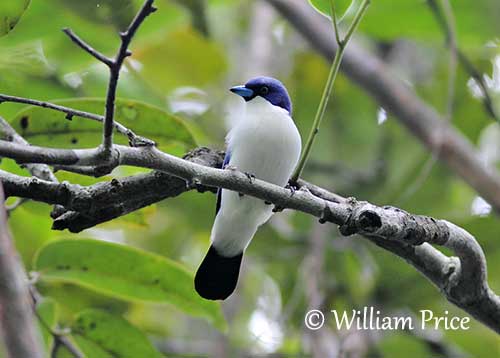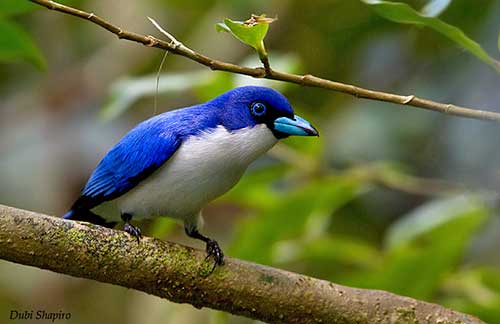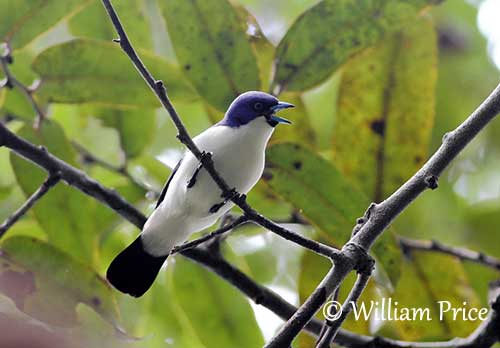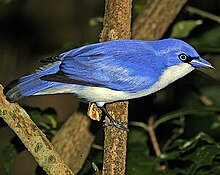In the lush forests of Madagascar, a remarkable avian gem graces the canopy with its vibrant colors and elegant demeanor. The Blue Vanga (Cyanolanius madagascarinus), a member of the Vangidae family, is a bird of captivating beauty and unique ecological significance. Join us on a journey to discover the stunning world of the Blue Vanga.

The Blue Vanga is a study in contrasts. Its upperparts are adorned with a resplendent shade of cornflower blue, while its underparts are pure, pristine white. These striking colors create a vivid and unforgettable contrast, making the bird a visual masterpiece against the backdrop of Madagascar’s verdant forests.
Beyond its striking appearance, the Blue Vanga is a skilled and agile forager. This species is known for its insectivorous diet, using its sharp beak to glean insects from leaves and branches. It’s also a proficient hunter, snatching flying insects mid-air with remarkable precision. Its nimble movements and keen hunting skills are a testament to its adaptability in Madagascar’s diverse ecosystems.

The Blue Vanga is not just a sight to behold; it’s a creature of song as well. During the breeding season, males serenade potential mates with a series of melodious calls. These vocalizations are not only a means of attracting a partner but also a way to establish territory and communicate with other birds in the vicinity.

Blue Vangas are known for their cooperative breeding habits. In a group effort, multiple individuals, often including non-breeding adults, help raise the chicks in a communal nest. This strategy is believed to enhance the survival chances of the young birds by providing additional protection and care.
The Blue Vanga is endemic to Madagascar, which means it is found nowhere else on Earth. This localized distribution makes it especially vulnerable to habitat loss and deforestation. Conservation efforts are critical to preserving the unique biodiversity of Madagascar and protecting species like the Blue Vanga.

The Blue Vanga serves as a living symbol of Madagascar’s incredible natural riches and the importance of preserving its unique ecosystems. It is a testament to the wonder of biodiversity and the role each species plays in the delicate web of life.

As we admire the beauty of the Blue Vanga, let us also remember the importance of conservation to ensure that future generations have the opportunity to marvel at the striking plumage and elegant presence of this remarkable bird.


